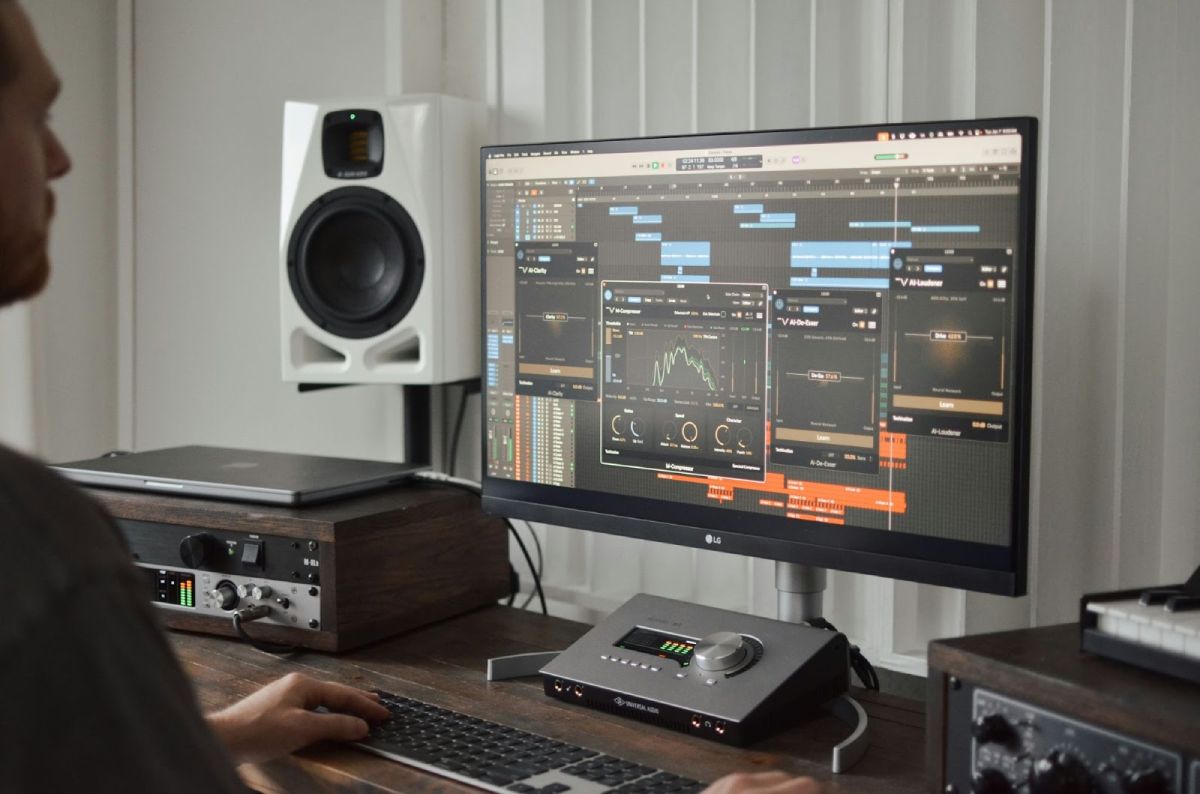Entertainment
Oliver Tam Scales-Copeland’s Tips for Mastering the Basics of Audio Mixing

Audio mixing is the art of transforming raw audio recordings into polished, professional-quality productions. It involves balancing, shaping, and enhancing individual tracks to create a cohesive final product that resonates with listeners. As illustrated by Oliver Tam Scales-Copeland, this process is as much about technical precision as it is about creativity, blending various elements to bring out their best qualities. With consistent practice, attention to detail, and a willingness to experiment, even beginners can develop the skills needed to craft exceptional mixes.
Understanding Audio Mixing and Its Importance
Whether it’s music, podcasts, or film audio, audio mixing transforms raw recordings into professional-quality work. Its importance lies in how it enhances the listening experience. A well-mixed track can make vocals clear, instruments distinct, and the overall sound more engaging. Without proper mixing, even the best performances or recordings can feel flat or chaotic, losing their intended impact. A thoughtfully mixed track has the power to evoke emotions, captivate the audience, and elevate the overall production.
Tools and Equipment You’ll Need
To achieve a clean and professional mix, the right tools are essential. A Digital Audio Workstation (DAW) is at the core of the process, allowing you to edit, layer, and manipulate audio with precision. Popular options like Ableton Live, Logic Pro, or FL Studio cater to different needs and skill levels. Studio headphones and monitors are equally important, as they provide accurate sound representations while mixing.
A well-treated listening atmosphere can make a notable difference. Rooms with minimal echo and balanced acoustics ensure you hear your mix as it truly is, without interference from the space. Plugins, such as equalizers, compressors, and reverbs, act as powerful tools to refine your sound. Investing in reliable equipment and software early on lays the foundation for consistent and high-quality results.
Foundational Concepts for Beginners
Understanding key concepts is crucial when starting with audio mixing. Balance ensures that no element in the mix overpowers the others, making each track audible and cohesive. Panning distributes sounds across the stereo field, creating width and allowing instruments to occupy their space in the mix.
The frequency spectrum is another critical aspect to master. Highs, mids, and lows must work in harmony without clashing or sounding muddy. Carving out space in the midrange for vocals can bring clarity to a song. Dynamic range, the difference between the quietest and loudest parts of a mix, also plays a role in keeping the music emotionally engaging without overwhelming the listener. Over time, practicing these basics helps build confidence and lays the groundwork for experimentation.
Beginner-Friendly Mixing Workflows
A streamlined workflow can make the mixing process less intimidating for beginners. Start by organizing your session—label each track clearly and group similar instruments together to keep everything tidy. Adjusting levels comes next, ensuring each track sits comfortably in the mix without overpowering others.
Incorporating tools like equalizers and compressors helps refine the sound further. Equalizers allow you to shape frequencies, removing muddiness or enhancing brightness, while compressors manage dynamics, ensuring consistency across the mix. Adding effects like reverb or delay can enhance depth, but moderation is key to avoid cluttering the sound. Regularly comparing your mix to professional tracks in the same genre helps identify areas for improvement and keeps your ears calibrated throughout the process.
Avoiding Common Pitfalls
Beginners often make the mistake of overloading their mix with effects, thinking more is better. This can lead to a cluttered and unnatural sound. Another frequent issue is neglecting gain staging, which involves maintaining proper levels throughout the signal chain to avoid distortion or loss of headroom. Proper gain staging ensures the mix remains clean and balanced.
Panning is another area that’s easy to overlook. Spreading instruments across the stereo field can make a mix feel spacious and dynamic, but too many elements centered in the mix can create a crowded and flat sound. Monitoring your mix at different volumes and on various playback systems can also help you catch issues that might be missed otherwise. Keeping these pitfalls in mind and approaching each mix with a clear plan can save time and frustration while improving the final result.
Building Your Skills Over Time
Developing as a mixer takes patience and consistent practice. Working on a variety of projects, from different genres of music to spoken-word content, sharpens your ability to adapt to various styles. Recreating the sound of professional mixes can also be an effective exercise, as it trains your ear to identify sonic details and replicate them in your work.
There are countless resources available to help you grow. Tutorials, online courses, and forums offer valuable insights and guidance, often for little to no cost. Over time, critical listening becomes second nature, allowing you to identify subtleties like frequency clashes or phase issues. Experimenting with unconventional techniques or blending genres can also spark creativity and help you stand out. Remember, mixing is as much an art as it is a science, and your unique style will emerge as you refine your skills and explore new techniques.
-

 Gadget4 weeks ago
Gadget4 weeks agoAfter Grand Success on BLDC Ceiling Fan, Eff4 Is Launching Smart Bulb
-

 Festivals & Events4 weeks ago
Festivals & Events4 weeks agoGoogle Celebrates Cherry Blossom Season with Animated Doodle
-

 Business2 weeks ago
Business2 weeks agoPrakash and Kamal Hinduja: Driving Social and Environmental Change
-
Education3 weeks ago
Fred DuVal: University Leadership as a Critical Resource for Climate Change Research and Life-Saving Solutions
-

 Health2 weeks ago
Health2 weeks agoThe Hinduja Brothers Commitment to Global Health: Empowering Communities Across Borders
-

 Cryptocurrency3 weeks ago
Cryptocurrency3 weeks agoDesigned For The Masses: How Akasha (AK1111) Is Unlocking Crypto For The Next Billion Users
-

 Cryptocurrency3 weeks ago
Cryptocurrency3 weeks agoNexaglobal & Future World Token (FWT): Could This Be the Next Big Crypto Investment of 2025?
-

 Sports4 weeks ago
Sports4 weeks agoWomen’s NCAA Tournament 2025 Sweet 16: Full Schedule, Fixtures, Teams, Bracket, and How to Watch March Madness Basketball Match Live













